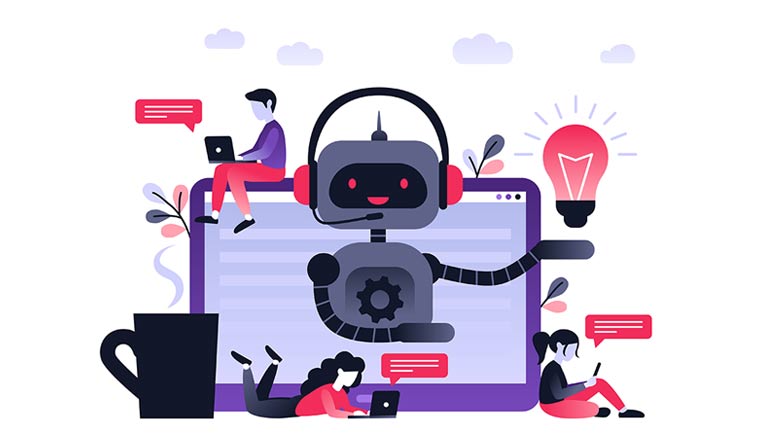Debating The Intelligence Of Chatgpt: How Smart Is Conversational Ai?

Executive Summary

The development of Conversational AI has brought remarkable advancements in the field of natural language processing. Chat Generative Pre-trained Transformer (ChatGPT), a prominent Conversational AI model introduced by OpenAI, has garnered much attention due to its exceptional language generation and comprehension capabilities. However, debates surrounding the true intelligence of ChatGPT persist, with varying perspectives on its cognitive abilities and limitations.

Introduction
Conversational AI, also known as Chatbots, have revolutionized human-computer interactions. By leveraging sophisticated language models, these AI-powered systems can engage in natural language conversations, offering a wide range of applications, including customer support, information retrieval, and even creative content generation. ChatGPT, in particular, has emerged as a frontrunner in this domain, showcasing impressive text-based communication skills and problem-solving abilities.
FAQ
-
What is ChatGPT?
ChatGPT is a large language model developed by OpenAI, designed to engage in text-based conversations, generate human-like text, and provide informative responses to various prompts and questions.
-
How does ChatGPT work?
ChatGPT leverages deep learning algorithms and a massive dataset of text and code to understand the context of user inquiries, generate coherent and relevant responses, and adapt its output based on feedback.
-
What are the limitations of ChatGPT?
Despite its advanced capabilities, ChatGPT has limitations, including potential biases in its training data, difficulty in handling factual errors or complex reasoning tasks, and a tendency to produce generic or repetitive responses in certain situations.
Key Subtopics
1. Language Generation
Description: ChatGPT’s ability to generate human-like text is a defining feature. It can produce various forms of content, from creative stories and poems to informative articles and persuasive essays.
-
Natural Language Understanding: ChatGPT demonstrates a sophisticated understanding of natural language, enabling it to comprehend the intent and context of user prompts.
-
Text Summarization: It can condense extensive passages into concise and coherent summaries, capturing the key points and providing a quick overview.
-
Creative Writing: ChatGPT’s creative capabilities extend to generating original stories, poems, and other forms of imaginative content, exhibiting its ability to think outside the box.
2. Code Generation
Description: ChatGPT exhibits proficiency in generating code in response to user prompts. It can write code in various programming languages, assist in debugging, and even suggest code optimizations.
-
Syntax and Semantics: ChatGPT possesses a strong understanding of programming syntax and semantics, enabling it to generate code that is syntactically correct and semantically meaningful.
-
Problem-Solving: It can assist in solving coding challenges by providing algorithmic solutions and suggesting efficient approaches to specific programming tasks.
-
Code Optimization: ChatGPT can analyze existing code, identify potential inefficiencies, and propose optimizations to improve code performance and efficiency.
3. Information Retrieval
Description: ChatGPT serves as a valuable tool for information retrieval, providing comprehensive and informative responses to factual inquiries.
-
Knowledge Base: ChatGPT has access to a vast knowledge base, enabling it to provide accurate and up-to-date information on a wide range of topics.
-
Search and Summarization: It can perform web searches, extract relevant information, and summarize findings, presenting them in a concise and organized manner.
-
Contextualized Responses: ChatGPT considers the context of user queries and provides responses tailored to the specific information need, demonstrating its ability to understand the intent behind the questions.
4. Conversational Skills
Description: ChatGPT engages in natural and engaging conversations, simulating human-like interactions through its comprehensive understanding of language and conversational cues.
-
Discourse Comprehension: ChatGPT can follow complex conversations, track multiple threads, and maintain coherence in its responses, mimicking the nuances of human conversation.
-
Tone and Style: It adapts its tone and style based on the context and user preferences, conveying emotions and attitudes appropriately.
-
Empathy and Engagement: ChatGPT demonstrates empathy and understanding, offering supportive and emotionally intelligent responses, enhancing the overall conversational experience.
5. Bias and Limitations
Description: While ChatGPT offers impressive capabilities, it is essential to acknowledge its limitations and potential biases.
-
Dataset Biases: ChatGPT’s training data may contain biases, which can be reflected in its responses, highlighting the need for careful consideration and evaluation of the information provided.
-
Factual Errors: ChatGPT may inadvertently provide incorrect or outdated information due to limitations in its knowledge base or biases in its training data.
-
Overgeneralization: ChatGPT’s tendency to generate generic or repetitive responses in certain situations suggests that it may not fully grasp the nuances and complexities of human language and knowledge.
Conclusion
ChatGPT represents a significant advancement in Conversational AI, showcasing remarkable language generation and comprehension capabilities. However, its level of intelligence remains a subject of debate. While ChatGPT excels at tasks such as text generation, code writing, information retrieval, and conversational engagement, it has limitations in handling factual errors, overcoming biases, and engaging in complex reasoning. As Conversational AI continues to evolve, it is crucial to approach ChatGPT with a critical and discerning perspective, considering both its strengths and limitations to harness its full potential while mitigating potential risks and biases.
Keyword Tags
- Conversational AI
- ChatGPT
- Natural Language Processing
- Artificial Intelligence
- Chatbot
